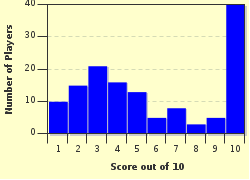Quiz Answer Key and Fun Facts
1. Where did the name Vimto come from?
2. As well as being a health drink sold at pharmacies, what was another key outlet for Vimto that helped spread its popularity in its early years?
3. How did Vimto manufacturers J.N. Nichols & Co respond to the 1926 UK General Strike?
4. During WWII Vimto, along with all other UK soft drinks brands, disappeared. It was only available as one of a range of beverages called "SFCs." What did this stand for?
5. In the 1950s Vimto finally abandoned claims to be a healthy tonic and repositioned itself firmly as a fun leisure drink that appealed to youth. How did the company underline this change of direction?
6. Vimto is now exported all over the world. "Double strength" Vimto, twice as concentrated as normal, has become very popular - where and for what purpose?
7. Vimto has many celebrity fans. What did British comic Peter Kay ask for when he wrote in as a youngster to the popular British TV show "Jim'll Fix It," which granted children some of their most imaginative and outlandish wishes?
8. What is the ratio of Vimto to other ingredients in a "Cheeky Vimto" cocktail?
9. A Vimto version of which popular board game was sold in 2008 as part of Vimto's centenary celebrations?
10. What would a "Vimto tourist" now find at 49 Granby Row in Manchester, where Noel Nichols first made his best-selling drink?
Source: Author
solan_goose
This quiz was reviewed by FunTrivia editor
Bruyere before going online.
Any errors found in FunTrivia content are routinely corrected through our feedback system.

